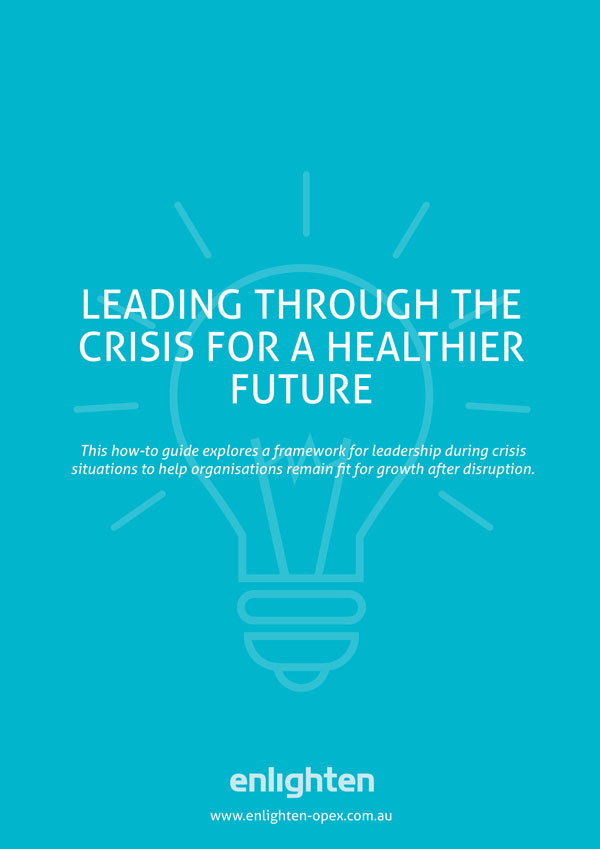The future elastic workforce
In our ‘AHA’ Moments 5-in-5 leadership conversation series, we spend 5 minutes with inspiring leaders who are making a difference through their leadership, asking five critical questions about the future of the elastic workforce.
In the third instalment, we are in conversation with Andrew Johansen, Co-Founder and COO of Enlighten, to understand what the new elastic workforce model looks like and how it will play a pivotal role in helping organisations build operational resilience through their elastic workforce model. Read on to get his insights.
What was a key ‘AHA’ moment for you during the last few months?
I think the biggest ever global work-from-home experiment has been a challenge for people and organisations across industries. So, it is incredible to see how quickly people have adapted both personally and professionally.
In general, organisations with pre-existing work-from-home solutions, the ability to share and route work with good operational metrics and rhythm have coped exceptionally well; some have changed their models forever.
This shift into an elastic workforce model does not only include a new domestic increase in the work-from-home environment but in some cases, global elastic workforces that can quickly move work from country to country promptly depending on demand.
I think the most significant AHA moment for me is that appropriate tools and operational metrics and rhythm create not only resilient companies but also massive opportunities to thrive in this environment.
What does operational resilience involve?
Operational resilience involves companies being able to deal with external threats while providing the same level of service to their customers without additional expense. Resilience requires swift reactions and being able to put sufficient plans in place to ensure business continuity.
We have found those organisations that understand their operational capability have been able to thrive when others are struggling to survive. We have also noticed that organisations are looking to continue to improve not only their capability but also their resilience.
What does the elastic workforce mean for you?
I think the elastic workforce is about creating a balance between flexibility and output for the company and the individual in the working environment.
For this to occur, we need a way to manage and route the work to the right people with the right skills at the right time, a knowledge resource that is real-time and a system to manage and understand our operational performance. This management system needs to be bound in an operational rhythm that strives for excellence.
This framework, essentially, needs to consider seven key factors:
- What do our customers think of our products and services?
- What do our employees feel about working in this organisation?
- Do our resources have the right skills, and are we developing them appropriately?
- Do we have a framework to manage and mitigate our risks?
- How productive are we as individuals, teams and divisions?
- How effective are our processes and procedures?
- How much do our operations cost us and where are the most significant opportunities?
How did Enlighten embrace the elastic workforce?
Internally, we can have our engineers work from any part of the globe at any time of the day. The days of 9 to 5 in the office are over. We are now working to create a rhythm that allows flexibility, inclusiveness and collaboration simultaneously. I expect we will have a combination of virtual and physical contact to ensure we keep the social fabric where possible.
Our consulting teams have been working with clients on several implementations globally to support them during this challenging time, to ensure they are not just surviving but thriving in their new environment.
Delivering consulting ‘virtually’ presents several challenges, but also many opportunities. The use of remote consulting support creates so many opportunities for our clients, implementation teams and partners.
What is the new normal at Enlighten?
Our technical team have all been working from home these last few months, and because the tools and metrics have been in place for several years now, we have coped very well with this change.
I have seen many positive aspects but also recognise we need to be as inclusive as possible and communicate as frequently as possible to keep our team culture.
I am not sure you can ever replace the face-to-face deployment advantage. Still, we now have a highly skilled consulting group that can deliver results and provide support globally to all of our clients anytime and anywhere. We aren’t bound by geography anymore, and therefore, our consultants can be deployed across several regions, which affords the significant flexibility in itself.
This new way of working allows us to explore the best model for our clients now and in the future. I expect we will end up with several client options and hybrid delivery models, depending on the client’s requirements.


